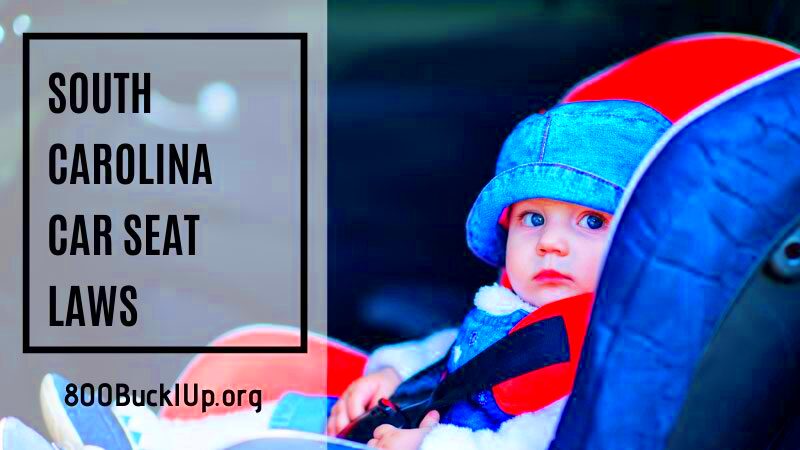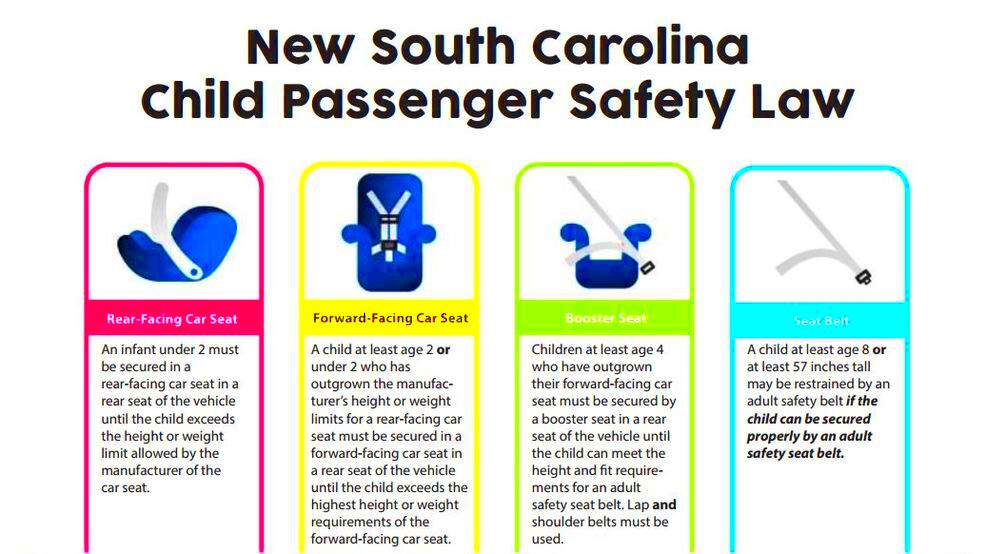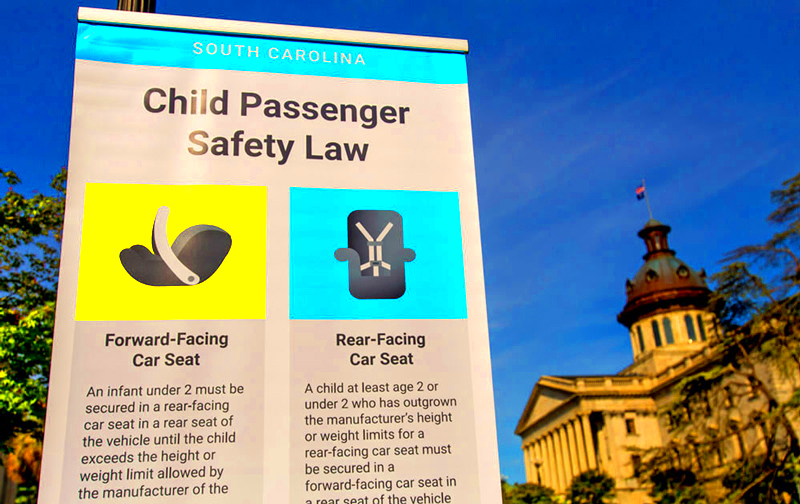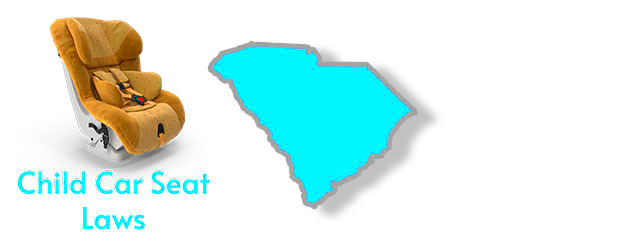Child Seat Laws in South Carolina and Legal Safety Standards
Child seat laws are crucial for protecting our little ones on the road. In South Carolina, these laws are designed to ensure that children are safely secured in vehicles, reducing the risk of injury during accidents. It’s important for parents and caregivers to understand these regulations to keep their children safe while driving.
Understanding the Importance of Child Safety Seats

Child safety seats play a vital role in keeping children safe during car rides. Here’s why they are essential:
- Injury Prevention: Properly used child safety seats can reduce the risk of injury by up to 71% for infants and 54% for toddlers in crashes.
- Legal Requirement: Many states, including South Carolina, have laws that require the use of child safety seats.
- Proper Fit: Child safety seats are designed to fit a child’s size and weight, providing better protection than adult seat belts.
By using the right safety seat, you’re not just complying with the law; you’re also making a smart choice for your child’s safety.
Overview of South Carolina Child Seat Laws

South Carolina has specific laws regarding the use of child safety seats. Here’s a breakdown of the key points:
| Age Group | Required Safety Seat | Details |
|---|---|---|
| Infants (0-1 years) | Rear-facing seat | Must remain rear-facing until at least 1 year old and 20 pounds. |
| Toddlers (1-4 years) | Forward-facing seat | Must use a forward-facing car seat with a harness until they reach the weight limit. |
| Children (4-8 years) | Booster seat | Must use a booster seat until they are 8 years old or 4’9″ tall. |
| Children over 8 years | Seat belt | Can use a seat belt if they fit properly without a booster seat. |
Understanding these laws helps ensure compliance and enhances the safety of children in vehicles. Remember, the best seat is the one that fits your child correctly and is used properly!
Types of Child Safety Seats Required by Law

When it comes to child safety, having the right type of car seat is essential. South Carolina law specifies several types of child safety seats, each designed for different age and weight categories. Here’s a look at the main types:
- Rear-Facing Seats: These seats are designed for infants and toddlers. They provide excellent head and neck support during a crash. It’s crucial to keep your child rear-facing for as long as possible, ideally until they are at least 2 years old.
- Forward-Facing Seats: Once your child outgrows their rear-facing seat, it’s time for a forward-facing seat with a harness. These seats are equipped to secure children aged 2 to 4 years and can support higher weight limits.
- Booster Seats: After outgrowing a forward-facing seat, children should transition to a booster seat. This type elevates the child so that the vehicle’s seat belt fits properly. Booster seats are suitable for children aged 4 to 8 years.
- Seat Belts: Children can use standard seat belts when they are at least 8 years old or reach a height of 4’9″. However, it’s essential that the seat belt fits snugly across the lap and shoulder.
Each seat type has its specific guidelines, ensuring the safety of your child on the road.
Age and Weight Requirements for Child Seats

Understanding the age and weight requirements for child safety seats in South Carolina is crucial for every parent. The laws are designed to protect children as they grow. Here’s a breakdown of the requirements:
| Age Group | Weight Limit | Type of Seat |
|---|---|---|
| Infants (0-1 year) | Up to 20 lbs | Rear-facing seat |
| Toddlers (1-4 years) | 20-40 lbs | Forward-facing seat with harness |
| Young Children (4-8 years) | 40-80 lbs | Booster seat |
| Older Children (8 years and older) | Over 80 lbs or taller than 4’9″ | Seat belt |
These requirements ensure that each child is safely secured in a way that best protects them based on their size and age.
Installation Guidelines for Child Safety Seats
Proper installation of child safety seats is key to ensuring they work effectively during a crash. Here are some essential guidelines to follow:
- Read the Manual: Always start by reading the manufacturer’s instructions for both the car seat and your vehicle.
- Choose the Right Location: The back seat is the safest place for children. The middle seat is preferred if possible, as it’s the farthest from side impacts.
- Securely Install the Seat: Use either the LATCH system (Lower Anchors and Tethers for Children) or the seat belt to secure the car seat. Ensure the seat does not move more than one inch side to side or front to back.
- Check the Angle: For rear-facing seats, ensure the seat is at the correct angle to keep the child’s airway open. Many seats have built-in angle indicators to help you.
- Harness Properly: Ensure the harness is snug and positioned correctly. The harness should lie flat on the child’s shoulders and chest without twisting.
Taking the time to install the child safety seat correctly can make all the difference in keeping your child safe during travel.
Common Mistakes to Avoid When Using Child Seats
Using child safety seats correctly is vital for your child’s safety, but many parents make common mistakes that can compromise protection. Here’s a list of mistakes to avoid:
- Incorrect Installation: Many parents don’t install the seat according to the manufacturer’s guidelines. Always read the manual for both the car seat and your vehicle.
- Using the Wrong Type of Seat: Transitioning to the next type of seat too early is a common error. Make sure your child meets the age and weight requirements before switching from a rear-facing to a forward-facing seat.
- Loose Harness Straps: If the harness isn’t snug enough, it won’t protect your child properly. You should only be able to fit one finger between the harness and your child’s collarbone.
- Not Using the Top Tether: When using a forward-facing seat, always attach the top tether strap to minimize movement in a crash.
- Leaving Children Alone in Cars: Never leave children unattended in a vehicle, even for a short time. Temperatures can rise quickly, posing a serious risk.
By avoiding these mistakes, you can significantly enhance your child’s safety while on the road.
Penalties for Violating Child Seat Laws
Understanding the penalties for violating child seat laws is crucial for every parent in South Carolina. Failing to follow these laws can result in serious consequences. Here’s what you need to know:
- Fines: Parents who do not comply with child seat laws may face fines ranging from $25 to $500, depending on the severity of the violation.
- Points on Driving Record: Violations can also result in points being added to your driving record, which can affect your insurance rates.
- Mandatory Safety Courses: In some cases, violators may be required to attend a child passenger safety course to educate themselves on proper seat use.
- Legal Liability: In the unfortunate event of an accident, not using a child safety seat can make parents liable for injuries, impacting insurance claims and legal proceedings.
Adhering to child seat laws not only ensures the safety of your child but also helps you avoid these penalties.
FAQs about Child Seat Laws in South Carolina
Having questions about child seat laws is common among parents. Here are some frequently asked questions that may help clarify things:
- What age can my child stop using a car seat?
In South Carolina, children can transition to a booster seat after turning 4 and should remain in a booster until at least 8 years old or 4’9″ tall. - Can I use a second-hand car seat?
It’s best to avoid used car seats unless you are sure they have never been in an accident and come with all original parts and the manual. - How can I ensure my car seat is installed correctly?
You can use resources like certified child passenger safety technicians who can inspect your installation for free or at a low cost. - What should I do if I have a child with special needs?
Consult with a healthcare professional for recommendations on the best seat options for children with special needs, as they may have unique requirements. - Are there exemptions to the laws?
There may be specific exemptions for medical reasons; however, it’s best to consult local laws or a legal expert for guidance.
By understanding these common questions and their answers, you can ensure your child’s safety while adhering to the laws in South Carolina.
Conclusion on Child Seat Safety and Legal Compliance
Ensuring your child’s safety while traveling in a vehicle is not just a legal requirement in South Carolina but a moral responsibility for every parent and caregiver. By understanding and adhering to the child seat laws, you contribute significantly to your child’s safety on the road. Remember to choose the correct type of seat based on your child’s age and weight, install it properly, and avoid common mistakes. Regularly check that the harnesses are snug and that the seat is secured in place. Compliance with these laws not only protects your child but also helps you avoid fines and penalties. Your diligence in following these guidelines can make a world of difference in the event of an accident. Prioritize child seat safety and ensure that every journey is a safe one for your little passengers.


